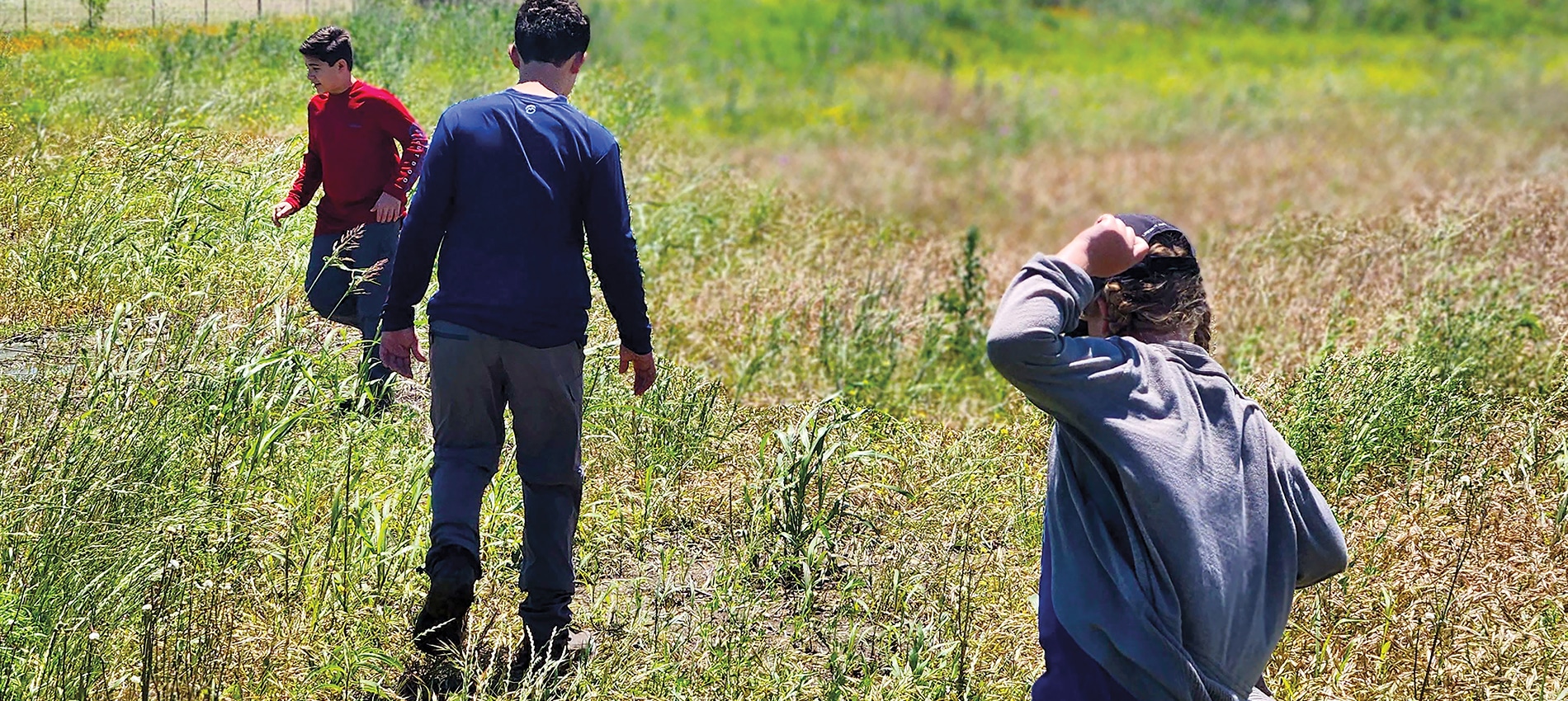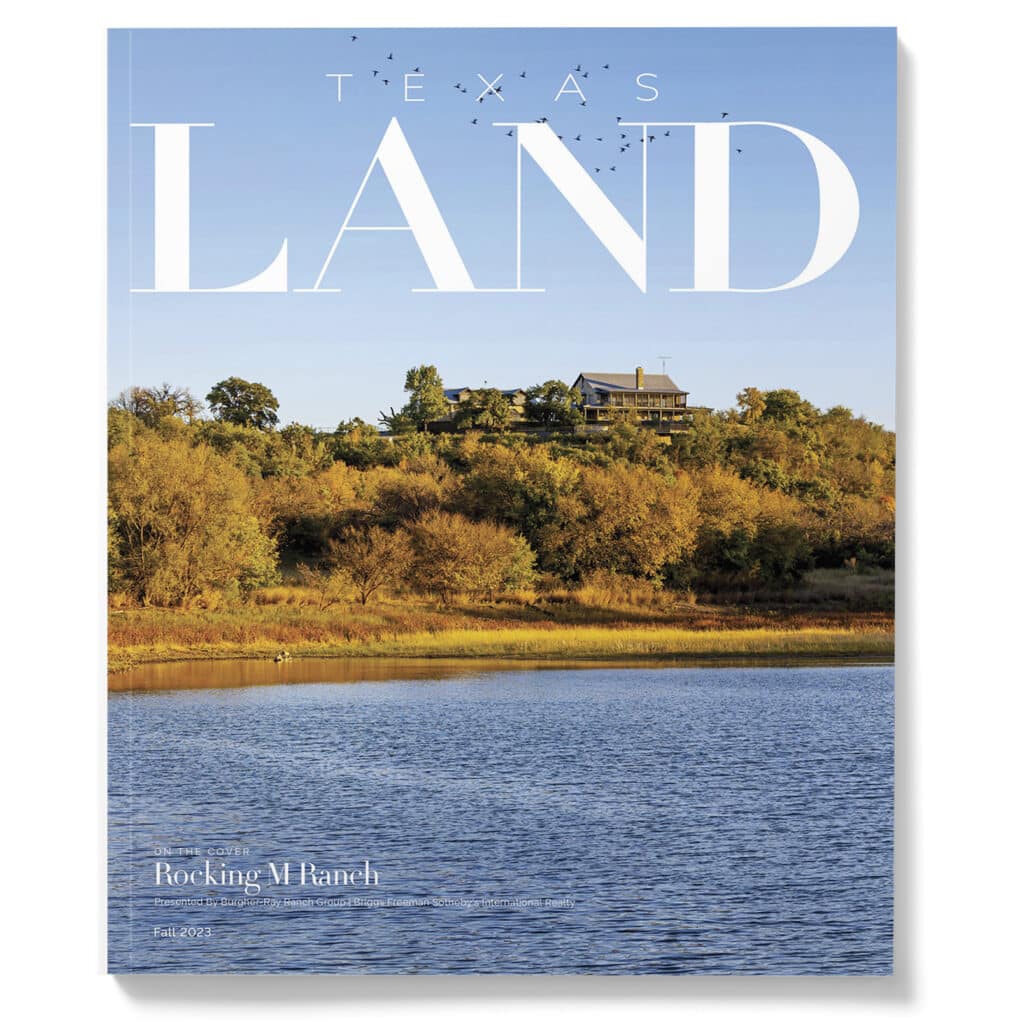
This article is featured in the Fall 2023 issue of Texas LAND magazine. Click here to find out more.
Family Land, Water & Wildlife Expeditions, the Texas Wildlife Association’s newest education program, offers diverse points of connection to the outdoors.
“While hunting has long been an entry point for conservation, we realized there is a huge appetite for non-consumptive activities that put people in touch with the natural world,” said Andrew Earl, TWA’s Director of Conservation. “Our goal is developing a pool of trained mentors who can engage young people and their families in a host of activities ranging from birding and angling to kayaking, plant identification, camping and more—and in the process empower them to conserve our natural resources.”
In the program’s first 18 months, expeditions have included: Intro to Fishing, Native Plant Workshop, Birding 101 and Exploring Flora and Funga.
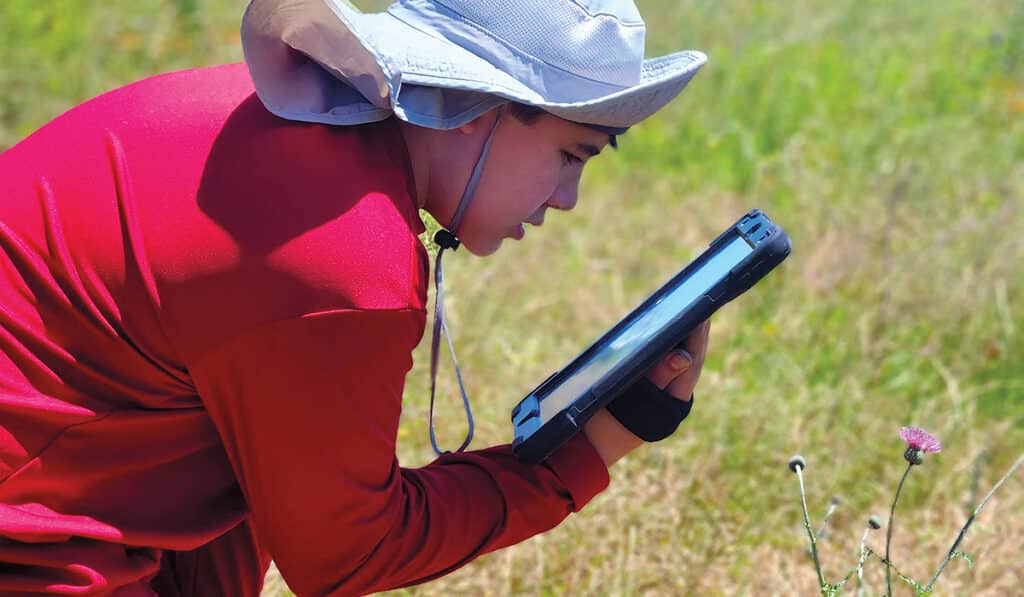
While the Family Expeditions are non-consumptive, they are built using some tried-and-true practices from the Texas Youth Hunting Program. With a 30-plus year history, TYHP is considered the nation’s gold standard when it comes to introducing young people to safe, ethical hunting. TYHP uses a cadre of highly trained Huntmasters who organize and manage all facets of individual hunts, allowing the program to spread all over Texas.
“TYHP has Huntmasters and Family Expeditions have Mentors,” Earl said. “To be a Mentor, you don’t have to be a certified wildlife biologist or hold a Ph.D., you just have to have expertise in a subject and passion for getting your fellow Texans outdoors.”
Mentors undergo a daylong training that provides the basics in organizing an experience, developing programming, delivering instruction, safety and other logistics. It is straightforward, simple and affordable; mentor training costs $50 per person.
To date, many of the expeditions have been led by TWA educators and have been held in Central Texas. One of the immediate goals is to train more mentors, which will help increase the number of expeditions and the diversity of subject matter.
“Our list of potential expeditions is only limited by people’s expertise and interest,” Earl said. “Our main questions are: ‘What’s accessible? What will get folks to sign up and get outdoors?’”
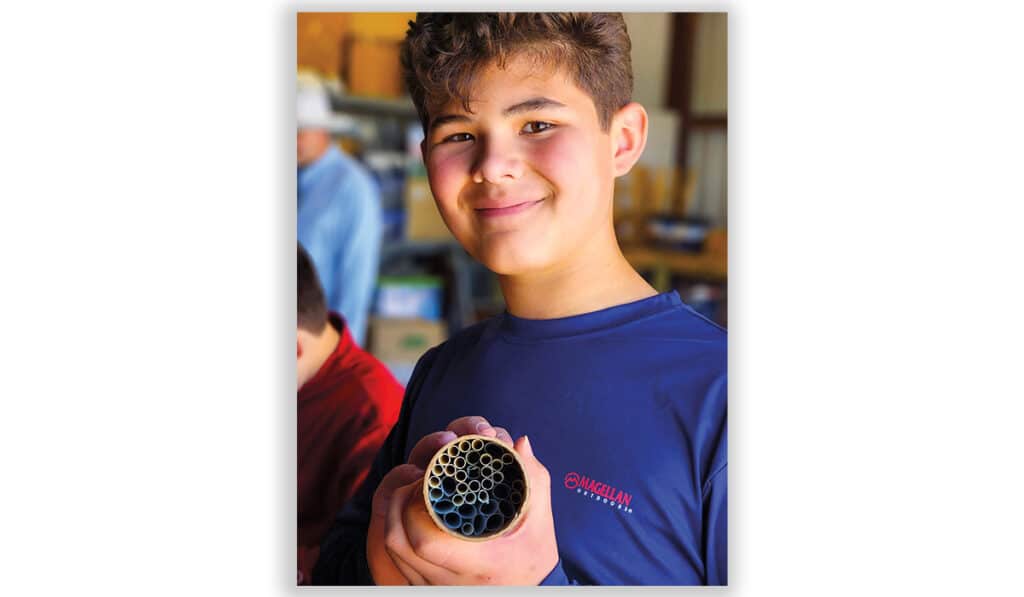
I enjoyed the plant identification, and I liked searching in nature. Everyone was really nice. It was awesome! Please keep it up and thank you so much!
—YOUTH PARTICIPANT
Exploring Flora & Funga
While some of the programs take place on public land, most take place on private land. The reason is two-fold. First, it puts the effects and impact of voluntary land stewardship right in front of youngsters and their significant adults and helps them see that the ecological benefits of well-managed lands extend way beyond the fencelines. Second, being on well-managed private land helps dispel the notion that conservation only occurs in parks and preserves.
“Being on private land also gives us a bully pulpit to remind them that they as property owners, even if their property is a suburban yard, can play a role in conservation that impacts the broader ecosystem,” said Chad Timmons, a TWA Conservation Education Specialist.
When it comes to a host site, size generally doesn’t matter. Overall acreage is secondary to access to a resource of interest. For instance, TWA has begun hosting plant identification workshops on its pocket prairie restoration project that surrounds its headquarters just outside New Braunfels.
“A small pond or small acreage holding is a potential site for an expedition depending on what we’re exploring,” Timmons said.
Whether the backdrop is a sprawling ranch or pint-sized pocket prairie, expeditions are chock full of information and hands-on experiences. Most have been one-day events.
Organizers try to fill whatever time is allotted to learning with valuable information, designed to remove perceived barriers to participation and make the outdoors accessible. For instance, participants in the birding expeditions walk away with knowledge of guidebooks and citizen science apps such as eBird and Merlin Bird ID that, along with a pair of binoculars, equip beginning birders.
“Sometimes people make it harder than it needs to be,” Timmons said. “We give them the tools to get outside and enjoy it.”
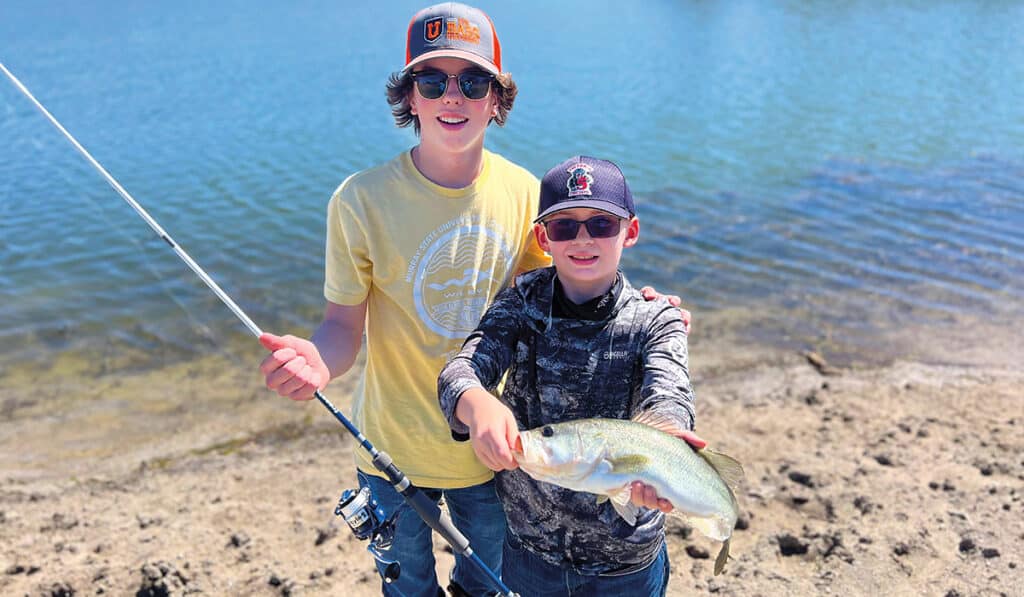
[The experience] was beyond expectation. We need more of these events! Everyone was kind, eager to help and well organized.
—PARENT PARTICIPANT
Intro to Fishing Expedition
The staff and volunteers are learning as they go. Some things work better than others. Regardless, the feedback has been overwhelmingly positive. Currently, demand is outstripping supply, so the program’s future can be expressed in a single word, “more.”
“Our future is more mentors and more expeditions in more places involving more partners, which ultimately means more Texans in touch with nature,” Timmons said.
WAIT, THERE’S MORE. . .
Student Land, Water and Wildlife Expeditions
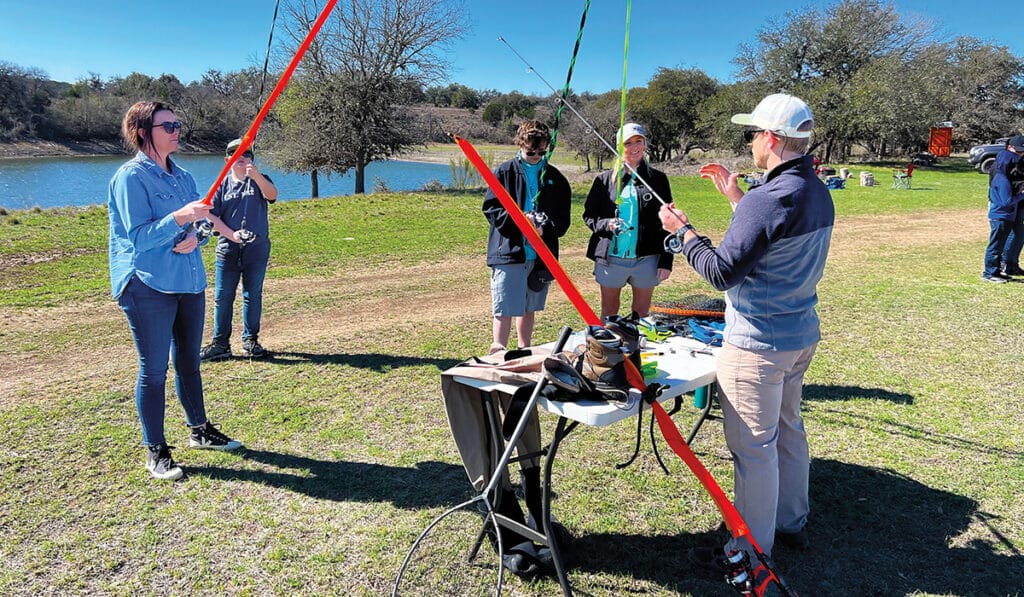
Family Land, Water and Wildlife Expeditions has a sister program, Student Land, Water & Wildlife Expeditions that are part of TWA’s formal education offerings. Student Expeditions deliver “middle and high school natural resources curriculum culminating with a day of outdoor studies focused on land, water, and wildlife.”
Science teachers at partnering schools incorporate four TWA lessons into their classroom. The educators choose from a “menu” of classroom lesson options that include lessons from Discovery Trunks, On-Demand Webinars and, for those schools in regions served by TWA conservation educators, Wildlife by Design Classroom Presentations.
The classroom learning culminates in a field day hosted on private land. Teachers and students will rotate through up to nine stations of hands-on experiences that bring the classroom lessons to life and reinforce them in a way that books and videos alone cannot.
